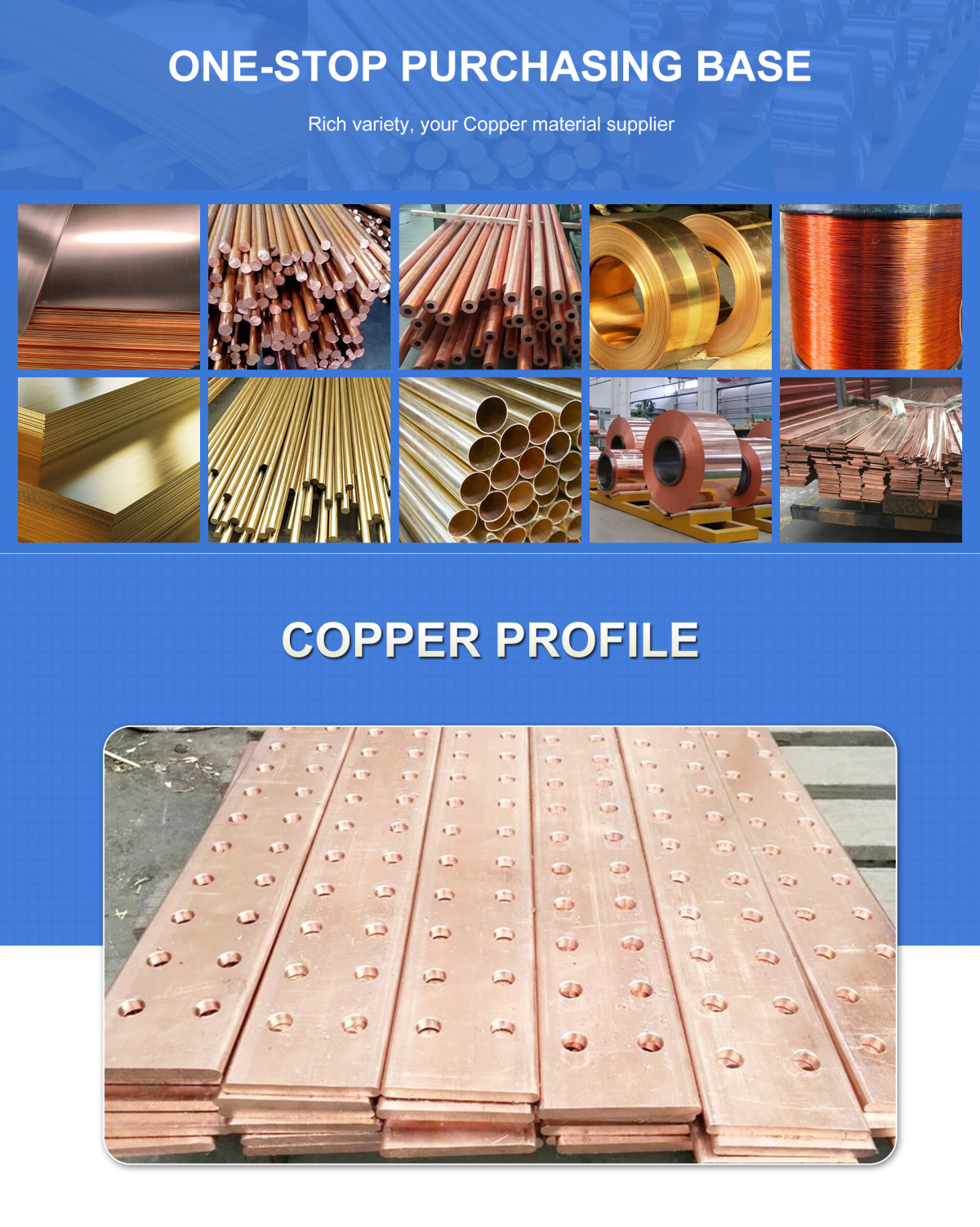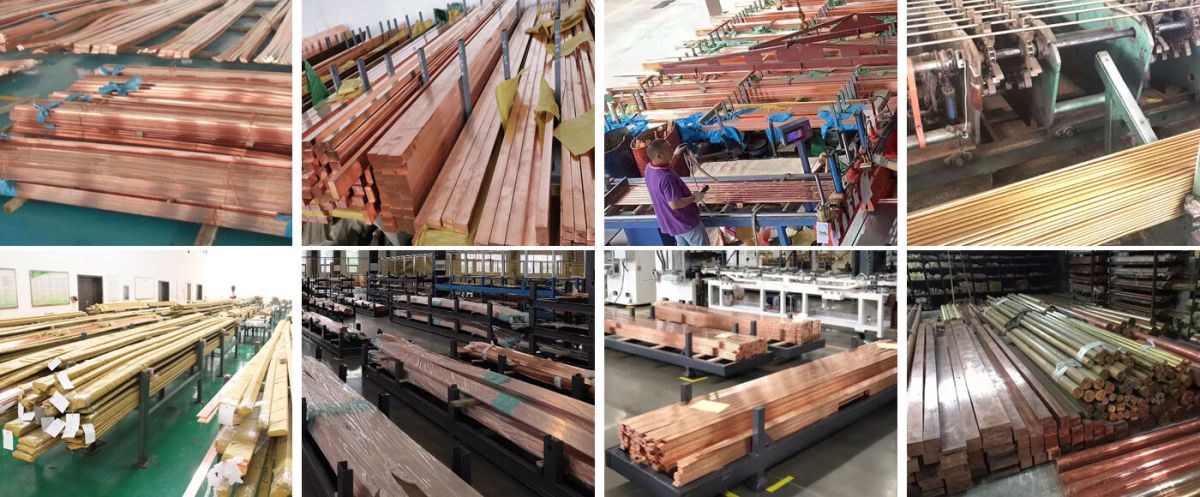
The dimensions of C36000 copper rods vary depending on the shape and processing technology:
Round rods
Diameter range: Common 1.5-100mm, some suppliers provide precision specifications from 0.0625 inches (about 1.5875mm) to 4.5 inches (about 114.3mm)
Length range: Generally 2500-6000mm, some standard lengths are 12 feet (about 3.66 meters)
Flat rods/rectangular rods
Typical dimensions are 15.88mm×3.18mm, other specifications can be customized.
Tolerance requirements: Diameter tolerance ranges from ±0.0013 inches to ±0.008 inches
Specific implementation depends on the standard.
International Standards
C36000 mainly follows the following standards:
ASTM B16: Standardizes chemical composition, mechanical properties and dimensional tolerances, requiring copper content of 60.0-63.0% and lead of 2.5-3.7%.
AMS 4610 and SAE J461: Supplementary material manufacturing and delivery requirements.
Other corresponding grades: such as JIS C3604, DIN CuZn39Pb3, etc., suitable for different countries/regions.
Main components:
Copper (Cu): 60.0%-63.0%
Zinc (Zn): As a balance, the content is about 32.5%-37.5%
Lead (Pb): 2.5%-3.7%, used to improve cutting performance
Iron (Fe): ≤0.35%
Other impurities (such as aluminum, phosphorus, sulfur, etc.): total ≤0.5%
Other trace components:
Aluminum (Al) ≤0.5%, used to strengthen the alloy
Sulfur (S), phosphorus (P), etc. ≤0.01%
Mechanical properties (by state)
Annealed state (O60)
Tensile strength: 330 MPa
Yield strength: 140 MPa
Elongation: 15-23%
Hardness: Brinell hardness (HB) about 80-90
Elastic modulus: 100 GPa
Shear strength: 210 MPa
Semi-hard state (H02)
Tensile strength: 360-395 MPa
Yield strength: 140-170 MPa
Elongation: 7-17%
Hardness: Brinell hardness (HB) about 90-100
Hard state (H04)
Tensile strength: 550 MPa
Yield strength: 310 MPa
Elongation: 4%
Hardness: Brinell hardness (HB) about 130
Other key properties
Fatigue strength: 135 MPa (hard state)
Impact toughness: Izod impact energy about 8 ft·lbf (11 J)
Shear modulus: 39 GPa
Poisson's ratio: 0.31-0.34

Production process and product advantages of C36000 copper rod:
1. Production process
Raw material processing and smelting
Electrolytic copper, zinc ingots, recycled brass parts, etc. are used as the main raw materials and heated to 900-1100℃ in an electric furnace for melting. Slag remover is added during the melting process to remove impurities, and the molten state is maintained by the insulation furnace. Some companies use submerged triple furnace smelting technology to simplify the process and reduce energy consumption.
Forming and processing
The molten copper liquid is formed into rods by a traction machine, followed by polishing (surface treatment), straightening and cutting. Some processes use continuous extrusion technology to replace traditional ingot heating, which has a significant energy-saving effect. The final product can be customized into various shapes such as round rods, hexagonal rods, rectangular rods, etc., with a size range of 1.5-8000mm.
Heat treatment
The annealing temperature is usually between 285-700℃, which is used to eliminate internal stress or adjust the hardness of the material. It should be noted that high-temperature annealing may cause lead segregation and affect welding performance.
2. Product Advantages
Excellent cutting performance
With a cutting performance rating of 100, it is an industry benchmark material, especially suitable for high-speed automatic screw machining.
Lead elements (2.4-3.7%) form chips instead of continuous chips during cutting, reducing tool wear and improving efficiency.
The two-phase microstructure further reduces friction resistance and extends tool life.
Comprehensive mechanical properties
The tensile strength range is wide (330-550 MPa), and the elongation is up to 25%. The performance can be adjusted by aging treatment.
The hardness covers HB 65-140, meeting different needs such as soft state (O60), semi-hard state (H02), and hard state (H04).
It has both high friction coefficient and plasticity, suitable for secondary processing such as cold/hot forging and riveting.
Corrosion resistance and conductivity
Stable in general corrosive environments, with a conductivity of about 26% IACS and a thermal conductivity of 115 W/(m·K), suitable for electrical equipment manufacturing.
However, it is prone to cracking in an ammonia or stress corrosion environment and should be used with caution.
Widely used areas
Machinery manufacturing: gears, bearings, automatic screw machine parts, valves, etc.
Transportation: automobile tractor parts, aviation instrument parts.
Electronics and electrical: connectors, terminals, cable accessories.
Consumer goods: watch parts, hardware products, architectural decoration parts.
Q1:Do you provide samples? Is it free or extra?
A1:Yes, we can provide samples free of charge and the customer will pay the freight.
Q2:What if I don't have export experience ?
A2:We have reliable forwarder agent which can ship items to you by sea/air/Express to your doorstep. Any way, we will help you choose the most suitable shipping service.
Q3:How long is your lead time?
A3:If it is in stock, it is usually 5-10 days. Or, if there is no inventory, 15 days, depending on the quantity.
Q4:What are your terms of payment?
A4:30% T/T deposit in advance, 70% T/T balance within 5 days after B/L copy, 100%.Irrevocable L/C at sight, 100% Irrevocable L/C after receive B/L 30-120 days, O/A.
Q5:How is your technical support?
A5:We provide lifetime online support through Whatsapp/ Skype/ Wechat/ Email. Any problem after delivery, we will offer you call anytime.
Welcome To Your Inquiry
What can we help you?
RELATED PRODUCTS










